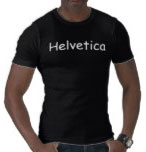You are hereby invited to the sixteenth installment of the NYU Game Center’s video game theory seminar series.
“The History of Video Games begins in Europe in the 1980’s”. Friday November 16 at 4-6pm.
Location: NYU, 721 Broadway, New York NY 10003, 9th floor conference room.
Please RSVP, see below!
If there is one thing that video game historians can agree on, it is the pivotal importance of the 1983 crash of the video game market. Yet, the crash went largely unnoticed in Europe where consoles were few and the industry only nascent. The history of European video games in 1980’s is better described as a period of unbroken growth and unprecedented experimentation in game design. In this session, our two speakers will discuss the history of early European experimental and independent games, and show how they prefigured much of what is happening in the video games today.
The two speakers of the day are Jaroslav Švelch from Charles University (Prague) and Jesper Juul from the NYU Game Center.
The Talks
Švelch: The Unintended Avant-garde – Two stories from 1980’s European game development
The talk discusses two separate stories from the history of computer games, united by the fact that the games at the center of these stories broke new grounds without much impact or commercial success. First, we will discuss the British game “Deus Ex Machina”, probably the first commercially released art game, designed in 1984 by Mel Croucher, whose mission to express abstract human experiences in many ways resembles today’s indie and art games. Secondly, we will talk about the text adventure game “The Adventures of Indiana Jones on Wenceslas Square in Prague on January 16, 1989”, which preceded editorial game design of games like Raid Gaza in being a response to contemporary events – in this case, the violently suppressed anti-regime demonstration in Czechoslovakia.
Juul: Indie Games are from Europe
In this talk, I will return to some of the most influential European games of the mid-1980’s and show how they contain both forgotten possibilities that we have yet to bring to fruition, as well as the seeds of many of the current themes in video games, such as the independent developer, games as experiment and personal expression, and the kind of short-turnaround cloning that we find in mobile distribution channels. At the same time, the discussion of video games in the especially the UK gaming press at the time was decidedly un-romantic, avoiding any discussion of games as an art form, vehicle of expression, or indeed as anything more than utility.
Speaker bios
Jaroslav Švelch is a Ph.D. candidate, lecturer and researcher at Charles University, and currently also a research intern at Microsoft Research New England. He holds a Bachelor’s degree in Journalism and Master’s degrees in Media Studies, and Linguistics and Phonetics/Translation Studies, all from Charles University in Prague. His research focuses on social uses of entertainment technology, history of computer games, language management online and the concepts of monstrosity and adversity in virtual spaces.
Jesper Juul has been working with the development of video game theory since the late 1990’s. He is a visiting arts professor at the NYU Game Center, and has previously worked at the Singapore-MIT GAMBIT Lab at MIT, the Danish Design School, and at the IT University of Copenhagen. His book Half-Real on video game theory was published by MIT press in 2005. His book A Casual Revolution examines how puzzle games, music games, and the Nintendo Wii brought video games to a new audience. His upcoming book The Art of Failure will be published in spring 2013. He maintains the blog The Ludologist on “game research and other important things”. Jesper Juul co-edits the Playful Thinking book series for MIT Press.
The theory seminars are aimed at researchers, industry professionals and students. Please RSVP so you can get into the building! jesper.juul (at) nyu.edu


![mf4Jm[1]](http://www.jesperjuul.net/ludologist/wp-content/uploads/2012/12/mf4Jm1-450x271.png)

 Get the T-shirt
Get the T-shirt The iPhone 5 case
The iPhone 5 case The cosmetic bag
The cosmetic bag